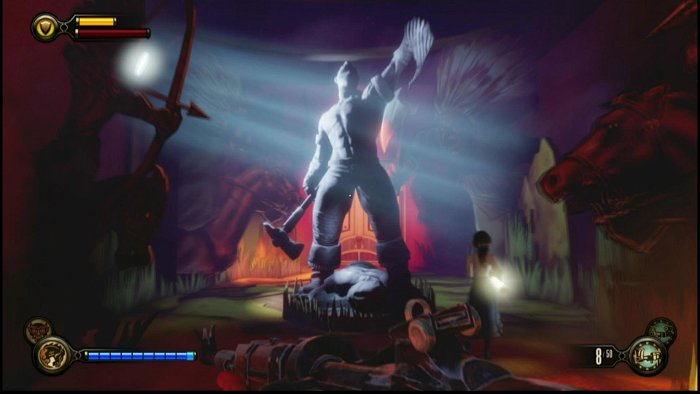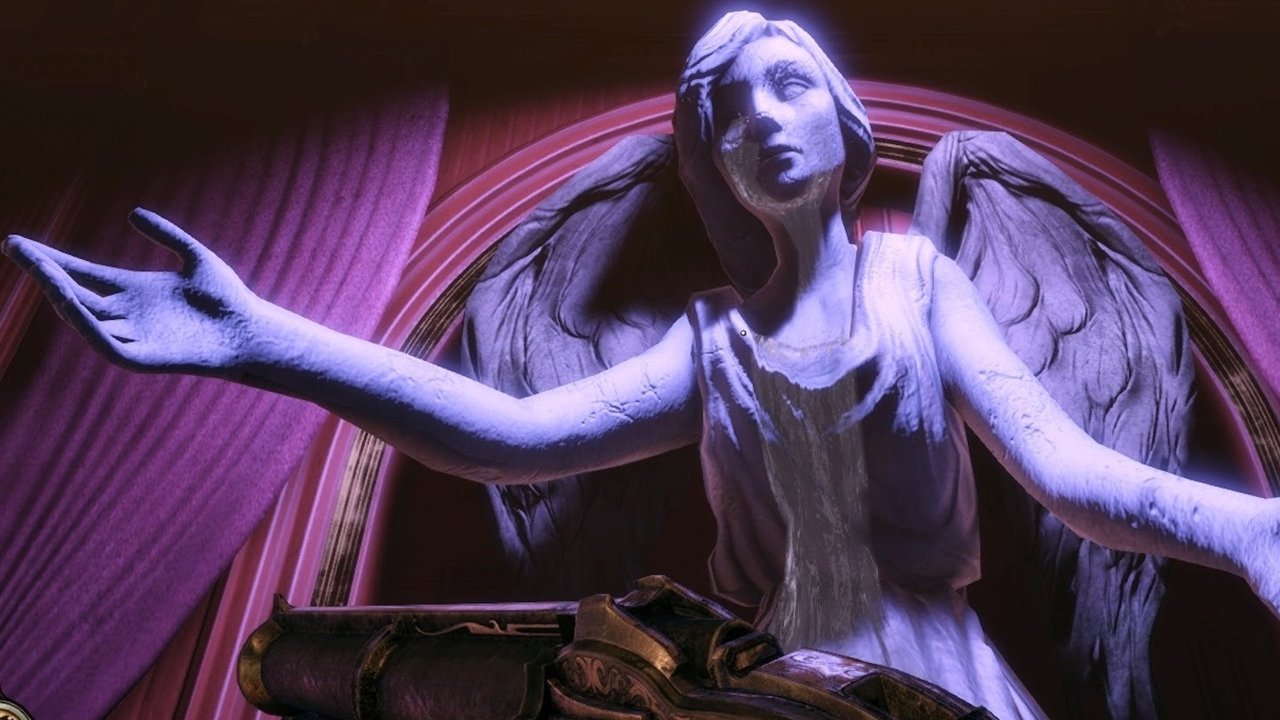It has been said that “a museum is a place where one should lose one’s head”, but I’m not sure this suggestion was meant to be adhered to quite as literally as my experience in BioShock Infinite’s Hall of Heroes, whereby many poor soldiers are being quickly dispatched by a deadly arsenal of plasmids and firearms. Between the frenetic combat and blood-soaked carnage, however, I’m soaking up the sights. Though I’m well aware that this one-sided ode to Columbia’s military achievements is a propagandist’s paradise, it nevertheless remains enjoyable to simply wander the exhibits and breathe in the atmosphere of this sensationalized parade of history told by the victors.

As someone who enjoys museums far more than they should for a 21-year-old (I highly recommend The Cumberland Pencil Museum in the Northwest of England), it’s no surprise that my eyes light up every time a virtual museum shows up in a videogame. To explore the history and science of the real world is always fascinating, but to enjoy the same experience in a fictional universe is something else entirely. The entertainment value of this very particular experience is largely down to the fact that developers use the museum setting for a variety of different purposes—meaning that the player experience of each one is almost always unique.
Sometimes these environments are indeed used in the traditional sense—namely to learn about the history of the fictional universe itself—but they can still feel impactful even while conforming to expectations. In Uncharted 3, the player’s curiosities are twinned with Drake’s who, as a young boy, is checking out a Francis Drake exhibition in South America. Though the ultimate goal is to find and steal a specific artifact, the player is encouraged to enjoy the various exhibits at their leisure, and Naughty Dog’s camera worships the attention to detail of the displays by letting you zoom in and marvel at each one, complete with an appropriately awed reaction from Drake himself. For a franchise where the price of curiosity is often followed by intense brushes with danger and mayhem, it’s quite something for this threequel to include a sequence where the main character is simply enjoying a museum like anyone else.
This is more than just a leisurely paced setpiece, however, as this exhibit represents a hugely important lynchpin for Uncharted 3’s story. Not only is this the setting in which Nathan Drake and Victor Sullivan first meet, it also houses the McGuffin artifact that kicks off the events of the entire game itself; Francis Drake’s ring. Considering everything that this Columbian museum offers the player in terms of story and gameplay, then, Uncharted 3 is undoubtedly a better game because of it.
In another interesting example, Infinity Ward takes the idea of a museum and employ their own, uniquely Call of Duty-esque spin on it in Modern Warfare 2. In this post-story easter-egg level, players are able to admire various exhibits, each representing a mission in the campaign. Should you press the big red button at the end of the hall, however, this harmless display suddenly turns into an M-rated version of Night at the Museum, wherein every character model springs to life with the sole purpose of hunting you down. It’s dumb, fun and a pretty inspired idea for a post-credits level, not to mention an immensely challenging firefight should you be so inclined to trigger the aforementioned red button.
Finally, virtual museums can also be used as real educational tools for housing genuine exhibits in a way that no real museum could. To come full circle and return to the world of Bioshock, the original game’s “Museum of Orphaned Concepts”—an environment that can be enjoyed outside of the campaign—serves as the framework through which Irrational Games enlighten their readers on the behind-the-scenes development of the game itself. As the name suggests, the museums displays models and concepts for a bunch of early designs and shelved ideas, with text popping up on screen to give a little more background information about each one. It’s a brilliantly original way for the studio to detail the conceptual history of Bioshock, and my only complaint is that I wish it were a little bigger, as you can tour the entire thing within about 15 minutes. I’ve no doubt that a game as ambitious and groundbreaking as Bioshock has many more “orphaned concepts” to show off, and I’d have happily whiled away several hours in a museum like this.
I sincerely hope more games utilize the museum environment and explore its potential further, as the joy of discovery can genuinely be as tangible on the screen as it is within the walls of the world’s greatest exhibitions. Of course, with the prospect of proliferation comes the danger of oversaturation, but I have faith that the concept is novel enough to avoid falling into the trap of becoming a videogame trope. Museums in videogames can tell stories, embellish fictional lore, express creative themes and political statements, or simply act as a visual treat in a virtual world. Even those who might otherwise find museums to be terribly boring in real life could find a new understanding of their importance through videogames, and I hope that more developers begin to recognize this untapped promise in future.



